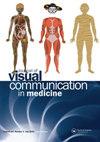人造眼制作人工眼睛的数码摄影技术
IF 1
Q4 RADIOLOGY, NUCLEAR MEDICINE & MEDICAL IMAGING
Journal of Visual Communication in Medicine
Pub Date : 2021-04-01
Epub Date: 2021-02-17
DOI:10.1080/17453054.2021.1882294
引用次数: 2
摘要
使用油彩手工绘制虹膜按钮仍然是制造人工眼睛的传统方法。作者发现,用病人未受影响的眼睛的数码照片代替这种技术比传统方法有几个优点,但是从捕捉到打印的过程必须标准化,颜色必须准确。本文的作者提出了一种经过试验和测试的照相过程,即在聚合之前捕获和打印。它讨论了可能出现的问题,以及如何克服这些问题,以实现高质量的打印,并用于生产“逼真”的眼部假体。本文章由计算机程序翻译,如有差异,请以英文原文为准。
Digital photographic technique for the production of an artificial eye.
The use of hand painting an iris button using oil paint remains the conventional method of artificial eye manufacturing. The authors found that replacing this technique with a digital photograph taken of a patient's unaffected eye offers several advantages over the conventional method but the process from capture to print must be standardised and colour accurate. The authors of this paper suggest a tried and tested formulated photographic process of capture and printing prior to polymerisation. It discusses issues that can arise and how these can be overcome in order to achieve a high-quality print that can be used to produce a 'life like' ocular prosthesis.
求助全文
通过发布文献求助,成功后即可免费获取论文全文。
去求助
来源期刊

Journal of Visual Communication in Medicine
RADIOLOGY, NUCLEAR MEDICINE & MEDICAL IMAGING-
CiteScore
1.50
自引率
14.30%
发文量
34
期刊介绍:
The Journal is a quarterly, international, peer-reviewed journal that acts as a vehicle for the interchange of information and ideas in the production, manipulation, storage and transport of images for medical education, records and research.
 求助内容:
求助内容: 应助结果提醒方式:
应助结果提醒方式:


